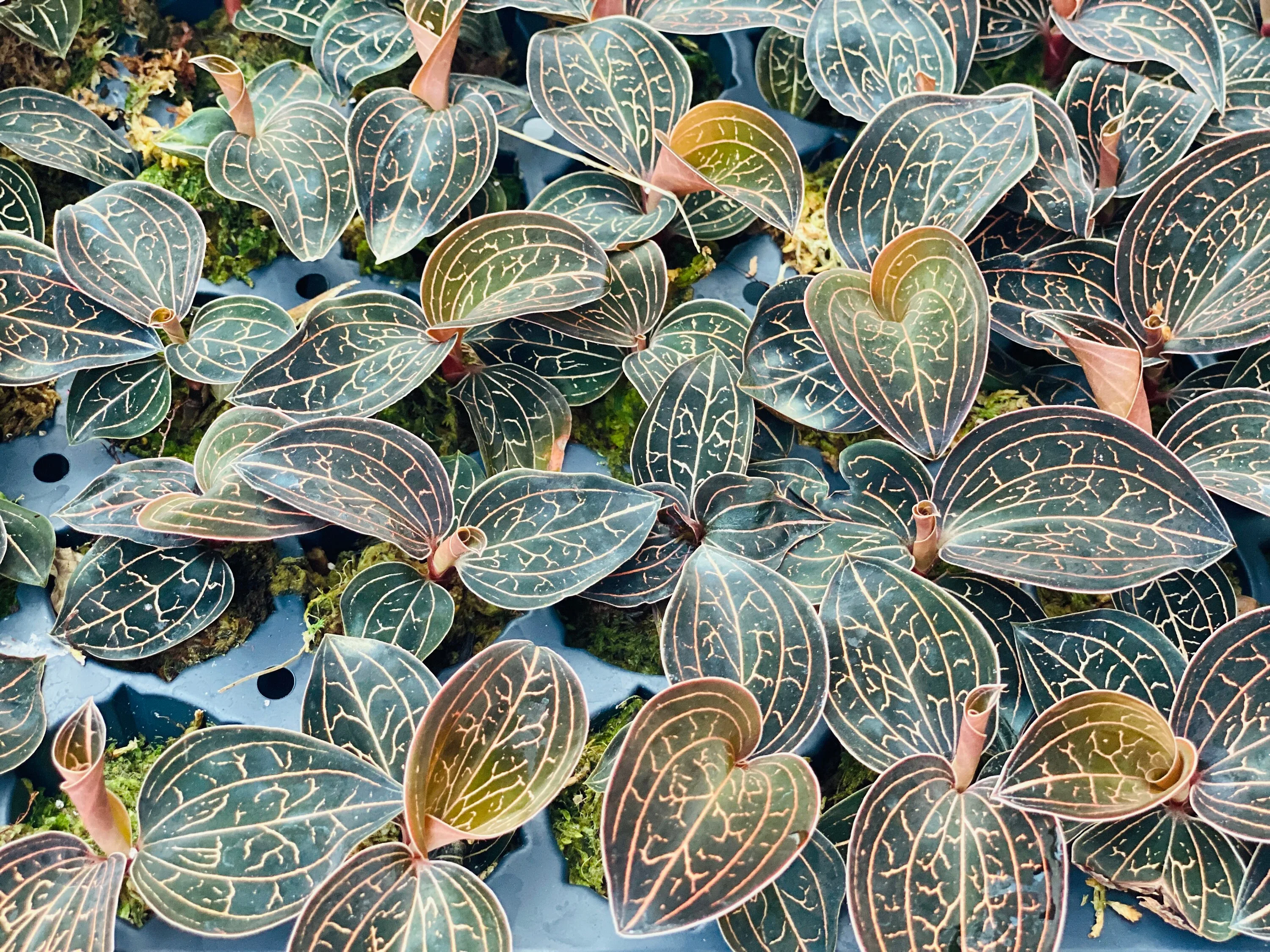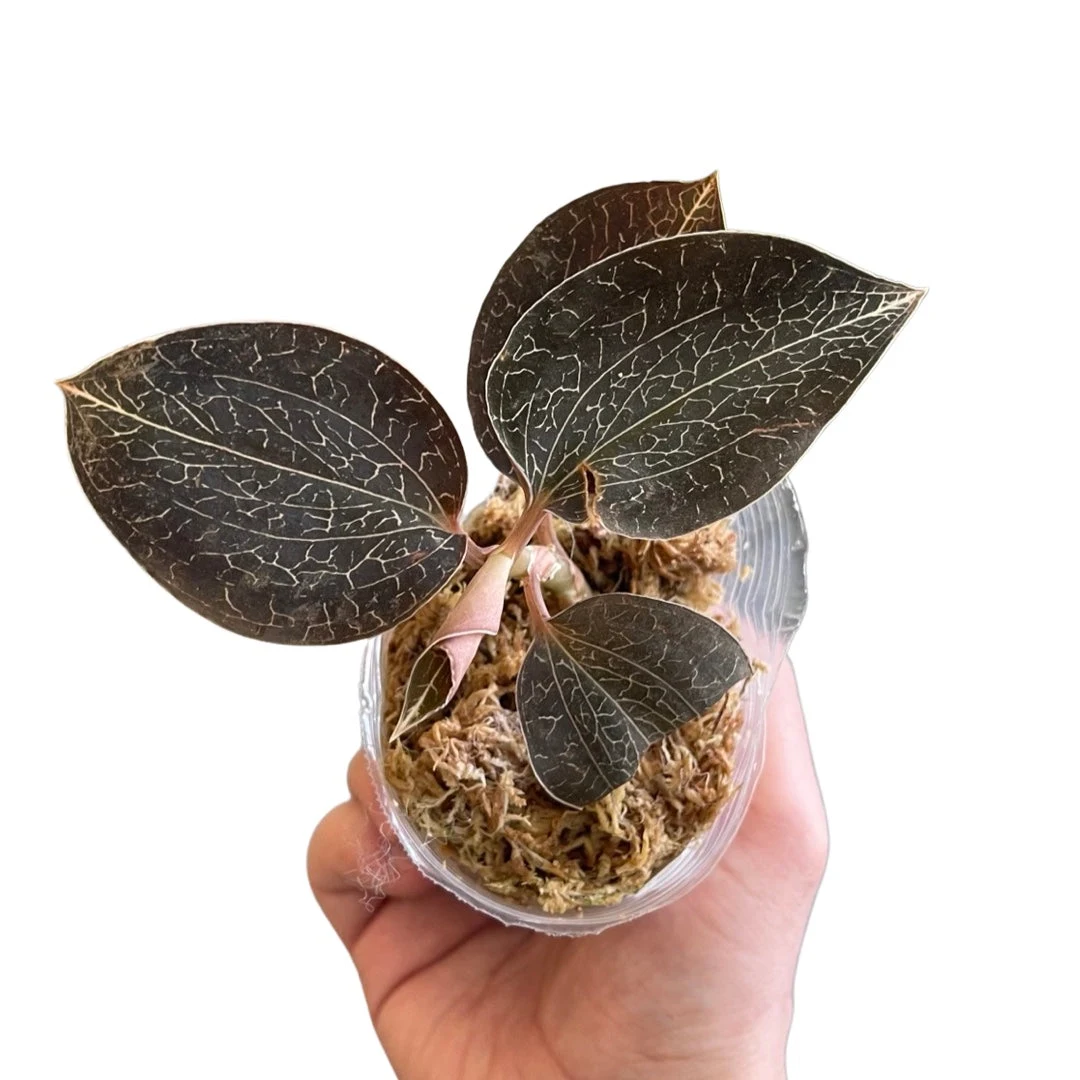Jewel orchids are stunning houseplants known not just for their delicate flowers, but more for their glistening, velvety foliage. If you're fascinated by unique and rare indoor plants, starting a jewel orchid garden is a rewarding way to add elegance and colour to your space. In this complete guide, we’ll explore everything you need to know about growing jewel orchids, from care tips to potting mixes, and highlight popular jewel orchid varieties like Macodes petola, Ludisia discolour, Anoectochilus, and more.
 |
| Jewel Orchids |
What is a Jewel Orchid?
Unlike their more famous orchid cousins that are admired for showy blooms, jewel orchids (members of genera like Macodes, Ludisia, and Anoectochilus) are grown for their spectacular foliage. Their leaves shimmer with intricate vein patterns that resemble precious gemstones, hence the name.
Popular Jewel Orchid Varieties
Let’s explore the most stunning and sought-after jewel orchid species:
1. Macodes petola (Jewel Orchid Macodes Petola)
 |
| Macodes petola |
- Famous for its lightning-bolt-like gold veining on deep green leaves.
- Thrives in high humidity and indirect light.
- A showstopper in any jewel orchid terrarium.
2. Ludisia discolor (Black Jewel Orchid)
 |
| Ludisia discolor |
- Features dark maroon to black leaves with pale pink or red veins.
- Known for being beginner-friendly and tolerant of household conditions.
- Produces small, white jewel orchid flowers on upright spikes.
3. Anoectochilus chapaensis
- A rare beauty with metallic veins and olive-green leaves.
- Needs more specialized anoectochilus care, including warm temperatures and filtered light.
4. Anoectochilus burmanicus
- Also called the Golden Jewel Orchid, this plant dazzles with bright gold veining.
- Prefers moist, acidic substrate and constant humidity.
5. Macodes sanderiana
- Slightly lesser-known than M. petola but just as stunning.
- Great for adding diversity to your jewel orchid garden.
Ideal Environment for Jewel Orchids
To grow healthy jewel orchid plants, mimic their natural rainforest understory habitat:
🌡️ Temperature & Humidity
- Temperature: 65°F – 80°F (18°C – 27°C)
- Humidity: 60%–90% (higher for Anoectochilus and Macodes varieties)
- Jewel orchids thrive in terrariums where you can maintain consistent humidity.
💡 Light Requirements
- Bright, indirect light or low light.
- Avoid direct sun, which can scorch the foliage.
- LED grow lights are perfect if your space lacks natural light.
Best Jewel Orchid Potting Mix
 |
| Jewel Orchid Planting Process |
Jewel orchids prefer a moist but well-draining medium. The perfect jewel orchid potting mix includes:
- 40% sphagnum moss or coco coir
- 30% perlite or pumice
- 20% orchid bark
- 10% charcoal or worm castings
Optional: Add leaf litter or fine fir bark for an organic, forest-like texture ideal for Macodes and Anoectochilus species.
How to Encourage Jewel Orchid Flowers
Though grown for foliage, jewel orchid flowers are charming and add seasonal interest. Here’s how to trigger blooming:
- Provide a slight drop in temperature in winter.
- Reduce watering slightly for a few weeks.
- Ensure the plant is not root-bound and has fresh nutrients.
- Flowers are typically small and white, appearing in winter or early spring.
Jewel Orchid Terrarium Setup (Optional)
Jewel orchids are perfect candidates for terrariums thanks to their size and humidity needs.
Key Components:
- Glass terrarium or closed container
- A layer of Leca or gravel for drainage
- Activated charcoal to prevent mould
- High-quality potting mix (as listed above)
- Moss for decoration and moisture retention
- Hygrometer and LED light (optional)
Great for showcasing Macodes petola, Anoectochilus, and other humidity-loving species.
Jewel Orchid Care Tips
- Watering: Keep the soil evenly moist, but not soggy. Allow the top inch to dry between waterings.
- Fertilizing: Use a diluted, balanced orchid fertilizer every 4–6 weeks in the growing season.
- Repotting: Every 1–2 years or when roots outgrow the pot.
- Propagation: Jewel orchids can be easily propagated through stem cuttings in sphagnum moss.
Common Problems and How to Fix Them
| Problem | Cause | Solution |
|---|---|---|
| Yellowing Leaves | Overwatering | Reduce watering; check drainage |
| Leaf Burn | Direct sunlight | Move to bright, indirect light |
| Droopy Leaves | Low humidity | Increase humidity with a humidifier |
| Mould or Fungus | Poor airflow or overly wet soil | Improve ventilation; use less water |
Final Thoughts on Growing Jewel Orchids
Whether you're a beginner plant parent or a seasoned collector, jewel orchids are a captivating addition to your indoor plant family. Their shimmering leaves bring exotic charm, and their manageable size makes them ideal for terrariums, shelves, or windowsills.
By following the care tips in this guide and selecting from breathtaking varieties like Macodes petola, Ludisia discolor, or Anoectochilus chapaensis, you can build a jewel orchid garden that is both stunning and satisfying.







